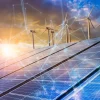The convergence of vertical farming and Internet of Things (IoT) technology represents one of the most significant breakthroughs in modern agriculture, addressing critical challenges of food security, urbanization, and climate change. As global populations continue to concentrate in urban areas and traditional farmland becomes increasingly scarce, vertical farming emerges as a revolutionary solution that maximizes crop production in minimal space while dramatically reducing resource consumption.
Vertical farming utilizes vertically stacked layers or integrated structures to cultivate crops in controlled indoor environments, fundamentally transforming how we approach food production. This innovative method has gained tremendous traction due to its ability to address diminishing arable land, climate change impacts, and the growing need for sustainable food systems to support expanding urban populations. The integration of IoT technology has elevated vertical farming from a promising concept to a commercially viable solution that can produce high-quality crops without herbicides, insecticides, or traditional soil-based cultivation.
The market dynamics reflect this transformation, with the vertical farming industry experiencing explosive growth from $5.03 billion in 2023 to $6.20 billion in 2024, and projections indicating continued expansion at a compound annual growth rate of 24.67%, potentially reaching $23.56 billion by 2030. This remarkable growth trajectory is driven by technological advancements, rising urbanization, and increasing adoption of sustainable farming practices, with IoT, AI, and hydroponic technologies playing critical roles in enhancing yield efficiency and resource management. The year 2025 is particularly significant, as industry experts identify it as a turning point where the convergence of emerging technologies and growing demand for sustainable, locally sourced food will drive significant breakthroughs in the sector.
IoT Sensors: The Foundation of Smart Vertical Farming
IoT sensors form the backbone of modern vertical farming operations, enabling precise monitoring and control of environmental conditions that are critical for optimal plant growth. These sophisticated devices continuously track essential parameters including temperature, humidity, lighting, soil moisture, and nutrient levels, providing real-time data that allows farmers to maintain optimal growing conditions.
The implementation of IoT sensors in vertical farming creates a tightly controlled growing environment where there is practically no room for error in natural variables and conditions. Temperature sensors ensure that crops receive consistent thermal conditions, while humidity sensors maintain optimal moisture levels in the air. Soil moisture sensors monitor water content in growing media, enabling precise irrigation scheduling that prevents both over-watering and drought stress.

Advanced IoT weather stations installed across vertical farms collect comprehensive data on multiple environmental factors simultaneously, including wind speed and atmospheric pressure, creating a complete picture of growing conditions. This granular data collection enables farmers to implement highly targeted and specific growing conditions for various plants based on their natural requirements, achieving unprecedented efficiency and resource conservation.
Automation Systems: Streamlining Vertical Farm Operations
IoT-powered automation systems revolutionize vertical farming by eliminating manual labor for routine tasks while ensuring consistent, precise execution of farming operations. These systems can automate irrigation, fertilization, and even harvesting processes, dramatically reducing labor costs and improving the economic viability of vertical farming operations.
Greenhouse automation represents one of the most successful applications of IoT in vertical farming, where sensors and actuators work together to monitor and control crucial environmental factors. Automated irrigation systems respond to soil moisture data in real-time, delivering precise amounts of water exactly when plants need it, resulting in 95% less water usage compared to conventional farming methods.
Smart pest control systems utilize IoT devices with sensors and image recognition technology to detect pest infestations early, enabling farmers to implement targeted control measures that minimize crop damage while reducing pesticide usage. This automated approach to pest management not only improves crop health but also supports sustainable farming practices by reducing chemical inputs.
Data Analytics and Predictive Intelligence
The integration of IoT sensors with advanced analytics platforms transforms raw environmental data into actionable insights that optimize farming operations. Predictive analytics capabilities enable farmers to make informed decisions regarding irrigation schedules, crop rotation, disease prevention, and resource allocation by analyzing patterns in weather data, soil conditions, and crop health metrics.
Agricultural drones equipped with IoT sensors and cameras provide comprehensive data on crop health, plant density, and irrigation needs, enabling farmers to identify problem areas proactively and optimize their farming practices. This aerial perspective, combined with ground-based sensor data, creates a complete monitoring system that maximizes yield while minimizing resource waste.
Farm management systems consolidate all IoT-generated data into centralized platforms that serve as command centers for vertical farming operations. These systems integrate crop yield data, environmental conditions, financial information, and inventory levels, providing farmers with comprehensive tools for planning, scheduling, and optimizing resource utilization across their entire operation.




